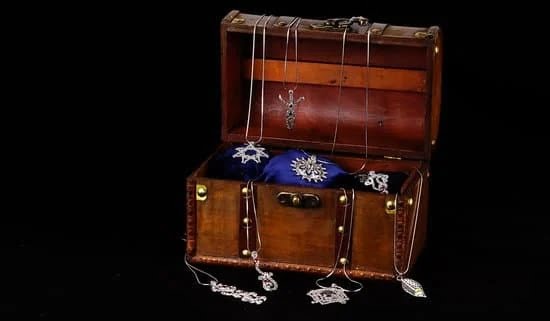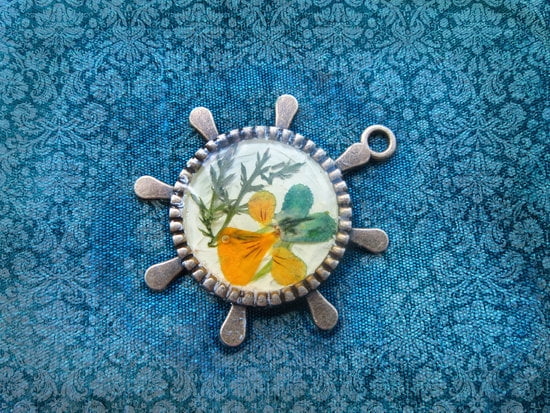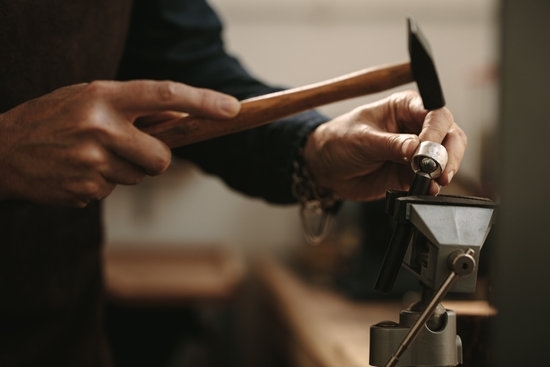Introduction
Organizing your jewelry collection is one of the best ways to protect your valuable items and keep them in good condition. A DIY jewelry organizer gives you control over how you store your pieces and makes it easy to keep track of any items that may be missing or misplaced. The advantages of creating a DIY jewelry organizer include saving time looking for jewelry pieces, fewer tangles with necklaces and a more visually appealing display of all the items. You can make an attractive, functional, and inexpensive piece by using supplies from your local hardware store or upcycling materials. In this guide, we will provide step-by-step instructions on how to make a stylish jewelry organizer for any space.
Materials and Tools Required for Making a Jewelry Organizer
Materials Required:
– Wooden board (30cm x 15cm): $5, available at any hardware store
– Felt fabric (20inch x 20inch): $3.50, available at any fabric store
– Painting pen (black color): $2.50, available at any arts and crafts store
– Scissors: Around $4, used for cutting fabric and also available at most arts and crafts stores.
Tools Required:
– Saw: Around $10 to 40, used for cutting the wooden board and can be found in most hardware stores.
– Drill machine: Around $15 to 50, used for drilling holes in the wooden board and can be found in most hardware stores.
– Hammer & Nails: Around $4 to 10, used for joining two pieces of wood together and can be found in most hardware stores.
Instructions for Making a DIY Jewelry Organizer
1. Measure and mark the 3/4-inch plywood to the desired dimensions for your jewelry organizer.
2. Use a circular saw or jigsaw to carefully cut out the shape of your jewelry organizer from the plywood. Make sure that all edges are smooth and even with no sharp edges left behind.
3. Once you have finished cutting, use sandpaper to further smooth down the wood surface to prepare it for painting or staining. Depending on the type of finish you wish to apply, you may need to do additional steps such as using various grades of sandpaper to create a hand-rubbed finish look or priming and/or painting with several coats depending on what is needed to achieve your desired result. However, if you plan on staining without painting first, it may be best to skip this step altogether as applying additional layers of primer and paint can reduce the vibrancy of a stain’s color.
4. Apply a layer of sealer before adding any paint, stain or other finishing coatings in order to protect your workpiece against any future moisture or damage from everyday wear-and-tear. After allowing this sealant enough time to dry thoroughly, use your chosen finish in such a way that it will not drip, splatter or bubble when applied properly over your wood surface. Depending on the type of finish used, you may need 2-3 coats in order for complete coverage and ensure durability over time.
5. To add organization features in order to display jewelry pieces within your jewelry organizer, measure and mark where along one side of your piece you would like shelves drilled (as many as desired). Carefully drill pilot holes into each marking as well as larger base holes for them by using an appropriate size bit for whatever hardware you may choose — wood screws are recommended for most applications if staple gun usage can be avoided in order to preserve an overall long flight look when complete but this all depends on the type of project at hand; use safe measures when drilling into pre-prepared wooden surfaces such as always wearing safety glasses! After all pilot holes are situated correctly and you’ve securely fastened any and all necessary hardware components with ease, screw in individual small dowel rods onto each designated shelf at measured intervals accordingly so that items can be properly stored within customizably designed organizational slots (add felt sheet scrap below downs rods so that items will be nudged adjacent away from contact when items added/removed). Finally, attach either wire mesh cutouts or small thin flat boards onto backside wall over each respective shelf area so that the display will appear consistent regardless viewable angle while also keeping other elements more securely pinned together as well since exposed shelving is clearly visible yet protected safely behind light coverings; these thin coverings also help deflect dust particles away from most sensitive surfaces simultaneously!
Creative Alternatives for Jewelry Organization
Corkboard: One great way to organize jewelry is to use a corkboard. You can get a pre-prepared one or make your own by getting some plywood, cutting it into the size you require, covering it with a piece of cork and then mounting it on the wall. Use clear push pins to hang necklaces, rings and earrings from the board—or if they’re too small to stay put, catch them in tacks.
Galvanized Buckets: A unique way to store and display your favorite pieces of jewelry is by using galvanized buckets. Choose two or three different sizes for great visual effect and fill each bucket with colorful fabric such as velvet. Add tiny cushions for earrings and keep bracelets lined up on the edges for easy access too!
Shadow Box: Shadow boxes are a great way to show off gemstone collections or hang necklaces in an attractive display. Paint the inside of your box white or another light color that will enhance its contents while framing each item off nicely. Use decorative paper to line the bottom of the box before hanging each item from pins which have been inserted every few inches apart.
Helpful Tips for Organizing Your Jewelry
1. Create a designated area for your jewelry and any related items, like cleaners and small tools for repairs. Allocate an area of your room or closet so that you have easy access to the pieces when you need them.
2. Sort your jewelry by type. Place like items together in one specific spot, such as earrings in one pouch, and necklaces in another. Grouping together pieces with similar styles and colors will help you not only find what you are looking for more easily, but also make the display aesthetically pleasing.
3. Determine how to store belongings based on how often they are used and how much space you have available using storage solutions like hangers, stands, boxes, compartments or wall-hanging holders/organizers as effective ways of storing jewelry where it will be seen and easily accessed.
4. Noise suppressants can be helpful when organizing bulky chains or items with metal pieces attached; dividers such as pill cases (non-plastic) help keep the noise down while still sorting items by type or color palette.
5. Clear containers keep delicate necklaces untangled while providing a view of all pieces without having to unstack multiple layers at once; alternatively purchase/use various sizes of containers that stack well from drawer supplies stores or ask around on websites such as Etsy for handmade organizers specifically designed for jewelry if nothing is locally available but fits the look desired for the room’s décor..
Conclusion
Having a neat and organized jewelry storage system is a great way to keep all of your most treasured pieces in one place. You can create a jewelry display that makes leaving the house with your accessories faster and easier than ever before. Not only will this give you a beautiful centerpiece in any bedroom, it will also help preserve the life of your jewelry. Having an organized system also helps you avoid wasting time looking for that one special piece in the morning. With these tips and more, you can easily make a neat and efficient storage system for all of your jewelry. Additionally, there are plenty of resources available to help you get even more creative and discover even more ideas for organizing your stunning pieces. With enough dedication and planning, anyone can create their own personalized jewelry organizer!

Welcome to my jewelry blog! My name is Sarah and I am the owner of this blog.
I love making jewelry and sharing my creations with others.
So whether you’re someone who loves wearing jewelry yourself or simply enjoys learning about it, be sure to check out my blog for insightful posts on everything related to this exciting topic!





